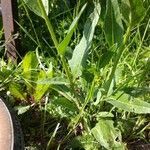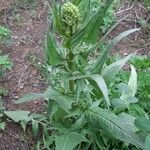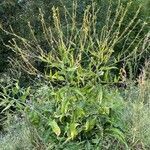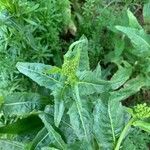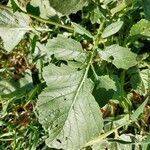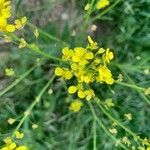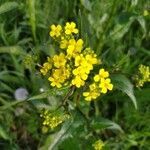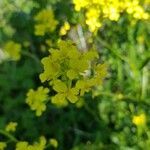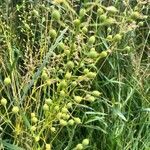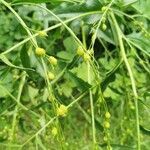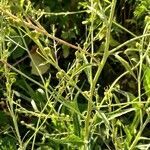Biennials or perennials; sparsely to densely pilose. Stems usually branched distally, rarely basally, (2.5-)4-10(-15) dm. Basal leaves: petiole (1-)2-10(-15) cm; blade lanceolate, 10-45 cm, margins coarsely dentate or pinnatifid, lateral lobes oblong or lanceolate, (terminal lobe deltate or lanceolate, larger than lateral lobes). Cauline leaves: (distalmost) blade lanceolate or sublinear. Fruiting pedicels divaricate, straight, 1-2(-2.3) cm. Flowers: sepals spreading, 2.5-4 × 1-1.5 mm; petals (4-)4.5-7(-8) × (2-)3-5 mm, claw (slender), 1-2 mm; filaments 1.5-3.5 mm; anthers 0.8-1 mm. Fruits ovoid, or, rarely, suboblong and slightly constricted at middle, terete, not winged, 1-or 2-loculed, (0.5-)0.6-0.7(-0.8) cm × 3-4(-5) mm, (gradually tapering to apex); style obsolete or, rarely, to 1 mm. Seeds 1 or 2 per fruit, 2-3.5 mm. 2n = 14.
Glabrous or sparsely glandular biennial or short-lived perennial to 1 m; lvs oblong, acuminate, the lower to 2 dm, ± pinnatifid or coarsely dentate, often with 2 large salient teeth near the base, the upper lvs progressively reduced, none clasping; mature pedicels to 10–15 mm; pet 4–8 mm; fr obliquely ovoid, 5–10 mm, coarsely and irregularly verrucose; 2n=14. Native of s. Europe, becoming established as a weed here and there in our range. May–July.
A cabbage family herb. It is a perennial plant. It can grow as an annual or biennial. It grows up to 1 m tall. It grows into a clump.
